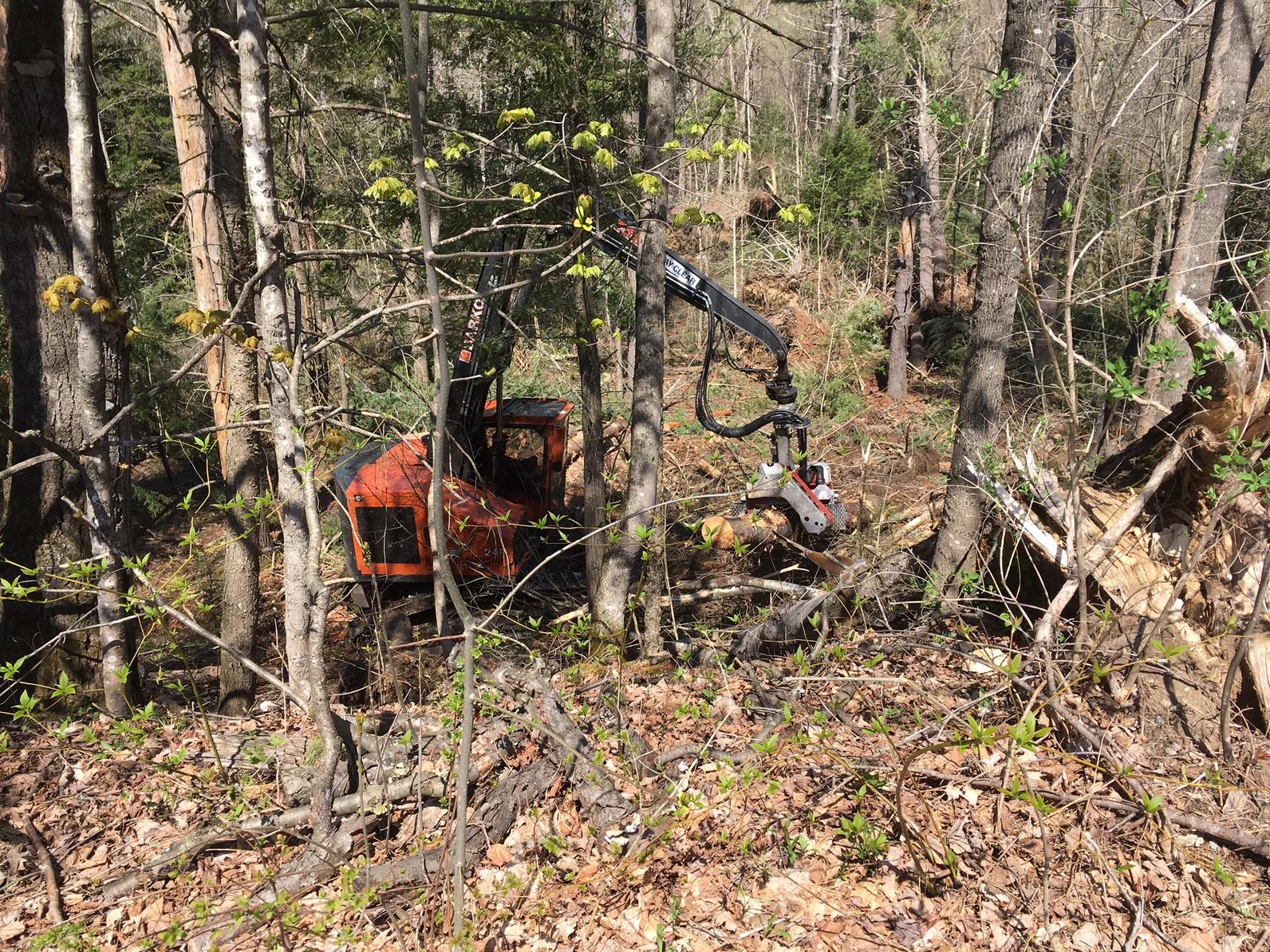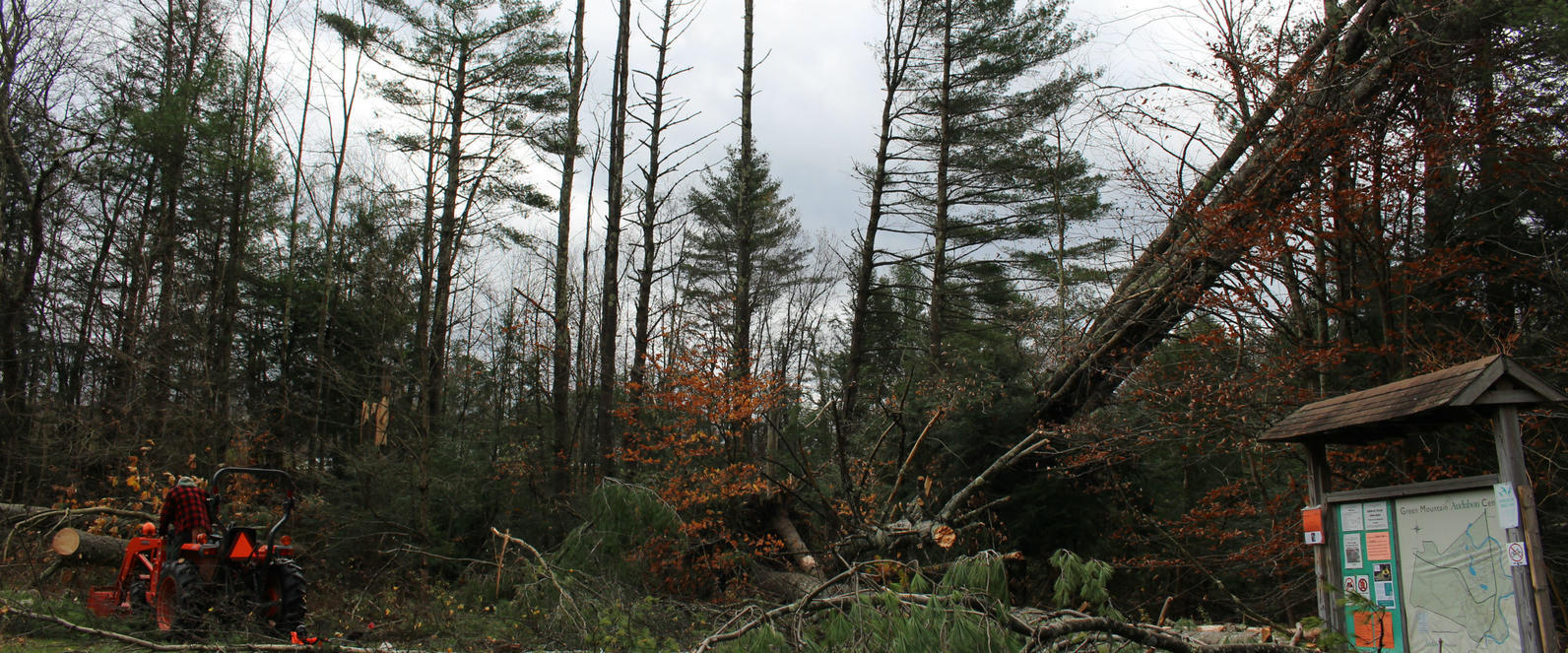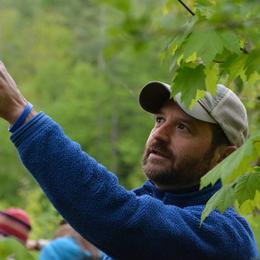It has been nearly 7 months since the windstorm that significantly impacted the forest, trails, and facilities at the Green Mountain Audubon Center. In the days and weeks following the storm Audubon staff and volunteers, including staff from Shelburne Farms and VYCC, worked to reopen trails and address immediate hazards.
Despite these efforts there remained areas where trees were uprooted but never fell completely to the forest floor. In a more remote forest setting this would be acceptable and in fact a boon for the natural processes of the forest (see the Audubon VT news article from December 2, 2017 for more on this). Adjacent to areas heavily used for education and recreation however, additional work was needed to address both safety and aesthetic concerns. Specialized forestry equipment under the command of a skilled operator was required.
During the winter of 2012-2013 a demonstration timber harvest was conducted at the Green Mountain Audubon Center by Grahm Leitner, owner of Vermont GreenWood Resources, LLC. Grahm held a keen understanding of Audubon’s primary goal of the harvest to enhance bird habitat. The thoughtful and careful approach he took is increasingly evident 5 years later. When the opportunity arose for Grahm to return to assist with the main areas of concern leftover from the windstorm Audubon Vermont staff unanimously agreed: Let’s do it!

In every forest management activity there needs to be an awareness of and balance between ecology and economics. The research is clear that a messy forest, including lots of wood lying on the ground, is an ecologically healthy forest. Not all of the wood can be left however. In order to pay the cost of getting the work completed some material needs to be pulled from the forest and utilized. This wood is also what supports Vermont’s forest economy. Grahm’s ability to assist with the storm cleanup fit well with this scenario. When all was said and done two truckloads of primarily white pine sawlogs were trucked off to the mill. In addition, 6-8 cords of firewood is being processed to fuel the Audubon Center’s maple syrup evaporator next year.
In the end the wind storm of October 30, 2017 has helped the forest to naturally regenerate itself, enhanced the quality of bird habitat, contributed to Vermont’s forest-based economy, and provided a supply of fuel necessary for producing another crop of the Green Mountain Audubon Center’s bird-friendly maple syrup. Not bad for such a “destructive” event.







